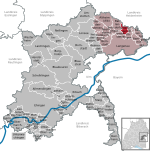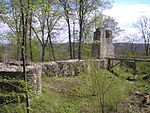Hohlenstein-Stadel

Hohlenstein-Stadel is a cave located in the Hohlenstein cliff (not to be confused with the Hohle Fels) at the southern rim of the Lonetal (valley of the Lone) in the Swabian Jura in Germany. While first excavations were started after the second half of the 19th century, the significance of some of the findings was not realized until 1969. The most significant finding was a small ivory statue called the Löwenmensch, which is one of the oldest pieces of figurative art ever found. The name of the cliff is derived from a combination of Hohlenstein meaning "hollow rock" and Stadel meaning "barn". The Hohlenstein cliffs are made of limestone which was hollowed out by natural causes to create caves. The Stadel is one of three caves in the area that are of important paleontological and archaeological significance. The other two are die kleine Scheuer (the small barn) and the Bärenhöhle (Bears' Cave). In 2017 the site became part of the UNESCO World Heritage Site Caves and Ice Age Art in the Swabian Jura.
Excerpt from the Wikipedia article Hohlenstein-Stadel (License: CC BY-SA 3.0, Authors, Images).Hohlenstein-Stadel
Lonetalweg,
Geographical coordinates (GPS) Address Nearby Places Show on map
Geographical coordinates (GPS)
| Latitude | Longitude |
|---|---|
| N 48.549166666667 ° | E 10.1725 ° |
Address
Bärenhöhle
Lonetalweg
89542 (Bissingen ob Lontal)
Baden-Württemberg, Germany
Open on Google Maps








